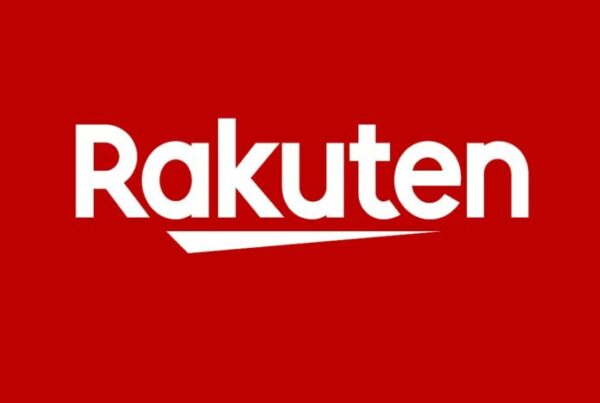Get Pinterested: Your Beginner’s Guide to Affiliate Marketing on Pinterest (Yes, you can thank us later! 😎
Introduction
So, you’ve decided to jump into the big world of affiliate marketing, and your weapon of choice is Pinterest. Good choice, my friend! Now, before we dive in, let’s set the mood. Imagine you’re in a shopping mall. Only this time, you’re not just browsing or buying, you’re actually earning while sharing your favorite items. Sounds too good to be true, right? Welcome to the world of affiliate marketing on Pinterest!
What’s the Big Deal with Pinterest Anyway? 📌
Well, to put it simply, Pinterest is kind of like that friend who always has the best recommendations. Around 80% of weekly Pinterest users have discovered a brand or product on Pinterest. They’re not just window shopping either – they spend about twice as much per month as folks on other platforms. Sounds like a pretty cool friend to have in your marketing squad, huh?
Preparing your Account for Battle
Before you march onto the battlefield of pins and boards, you need to have your armor in check. That’s right, we’re talking about setting up your Pinterest account for success:
- Create a free Pinterest business account: You need the extra power-ups a business account offers, like in-depth analytics and a more professional look.
- Optimize your boards for Pinterest SEO: This isn’t some techno-babble – SEO is how you get seen. And getting seen is half the battle.
- Craft a professional-looking profile: Put your best foot forward with a solid bio and a high-quality profile picture.
- Claim your website: If you have a blog, make sure to claim it on Pinterest.
Demystifying Pinterest SEO: What, Why, and How? 🕵️♂️
SEO sounds like some secret code, doesn’t it? And you’re not completely wrong. SEO stands for Search Engine Optimization, and in the context of Pinterest, it’s the magic spell that makes your pins more visible to the vast Pinterest audience.
So, what exactly is Pinterest SEO? Imagine Pinterest as a giant digital library and your pins as books. Without a system (SEO), finding the right book (your pins) would be a nightmare for the users (Pinterest searchers).
Pinterest SEO is all about optimizing your pins, boards, and even your profile to make them more discoverable. It’s like adding your book to the library’s catalog with the right title, summary, and category.
Why is it important? Let’s just say without it, your pin could be the best in the world, but if no one sees it, does it really matter?
As for the ‘how’, it involves researching and using relevant keywords, creating engaging content, using quality images, optimizing your pin descriptions, and board names, among other things. Remember, SEO is not just about pleasing the algorithms, it’s about creating a better experience for the users. Because at the end of the day, it’s not about the number of pins, but the people you inspire with them.
Scoring the Right Allies: Finding Affiliates 🤝
In the quest of affiliate marketing, you’re going to need some powerful allies. These allies are your affiliate programs and networks. They provide the products you’ll be promoting on your Pinterest account.
Now, choosing your affiliates isn’t just a game of eeny, meeny, miny, moe. It’s about forming strategic alliances that resonate with your audience on Pinterest.
Here are some popular affiliate networks you might want to consider:
- Amazon Associates: A well-known platform offering a wide variety of products. This makes it versatile, and you can select products that cater to your specific audience.
- Rakuten Advertising: This platform provides you with the opportunity to partner with top brands. So, if your audience loves high-end products, Rakuten Advertising might be the place to look.
- ShopStyle Collective: ShopStyle Collective is fantastic for fashion, beauty, and home decor. Perfect if your audience is into the latest trends.
- LTK (LiketoKnow.it): This platform focuses on fashion, beauty, and home decor. It’s a bit like ShopStyle Collective and a good fit if your audience appreciates curated lifestyle products.
- ShareASale: ShareASale offers a multitude of merchants under one roof, so you have a lot of variety to pick from.
- ClickBank: If your audience prefers digital products like eBooks and online courses, ClickBank is a treasure trove.
- Udemy: Udemy offers courses on nearly any topic you can think of. If your audience loves to learn, this platform is a goldmine.
When choosing affiliate programs, think about who your audience is and what they would appreciate. Are they tech geeks? Fashion lovers? Or maybe budding photographers? Align your product choices with your audience’s interests. For example, if your Pinterest page revolves around tech gadgets, Amazon Associates or ClickBank might be great affiliate programs to start with.
Preparing Your Weapons: Creating Pins 🎨
In the grand scheme of affiliate marketing on Pinterest, pins are your magic spells, your secret weapons. Now, crafting a pin is not just about slapping on a picture and calling it a day. Each pin is an opportunity to make a connection, grab attention, and, of course, drive traffic to your affiliate links.
Pinterest offers you three formats for your weapons of choice: Standard Pins, Video Pins, and Idea Pins. Let’s break them down:
- Standard Pins: These are your bread and butter, the classic still image format that made Pinterest famous. A well-designed Standard Pin with a catchy title and description can make Pinterest users stop scrolling and pay attention.
- Video Pins: These are moving versions of Standard Pins and give you a dynamic way to showcase a product or tell a story. A short, eye-catching video can be incredibly engaging and grab users’ attention in the sea of still images.
- Idea Pins: This is Pinterest’s answer to Instagram Stories. Idea Pins let you create multi-page pins with a mix of images, videos, and text on each page. They’re a great way to share step-by-step guides, detailed product reviews, or lists of products.
Pinning Note :
In crafting your pins, remember these key ingredients:
- Visual Appeal: High-quality images, engaging videos, and pleasing aesthetics make your pins stand out.
- Text Overlays: Brief, engaging captions on your images can provide context and pique interest.
- Consistency: Keeping a consistent style helps reinforce your brand and makes your content easily recognizable.
- Relevance: Make sure your pins match the interests and needs of your target audience.
- Optimized Descriptions: Incorporate keywords and hashtags naturally in your pin descriptions to improve discoverability.
Design platforms like Canva can be your best friend in this process. Canva offers a user-friendly interface and a vast library of templates, images, fonts, and illustrations to craft pins that truly pop.
In all, remember your pins are the bridge between Pinterest users and your affiliate products. Make them captivating, engaging, and reflective of what users can expect when they click through.
Charging Into Battle: Adding Affiliate Links to Pins 🔗
Now that you’ve got your allies and weapons ready, it’s time to charge into the battle of affiliate marketing on Pinterest. Adding your affiliate links to your pins is your battle cry, shouting to your audience, “Hey, check out this cool thing!”
You might think, “I just slap on the link and that’s it, right?” Well, not quite. Let’s break down how to do this effectively for each type of pin:
- Standard and Video Pins: For these pins, the process is straightforward. Once you’ve uploaded your pin image or video, you’ll see a field saying “Add a destination link”. This is where your affiliate link goes. Paste it in, and voila, your pin is now a beacon guiding users to your affiliated product. Do remember that Pinterest likes transparency, so always disclose in your pin’s description that it contains an affiliate link.
- Idea Pins: Now, these guys are a bit different. Currently, you need to use the mobile Pinterest app to add links to Idea Pins. Here’s how you do it:
- Go to the slide to which you want to add the link.
- Click the “Stickers” button at the bottom of the page.
- A new page will pop up with different sticker options. Here, click on the “Product” option.
- To use your custom affiliate link, click “Use a link.”
- Paste your affiliate link into the search bar. If successful, the product you’re trying to link should appear. Select it, click “Create”, and your link is now attached to your Idea Pin.
- Don’t forget to toggle on the button that says “This is an affiliate link or sponsored product.” It’s a crucial step to maintain transparency and stay within Pinterest’s guidelines.
Do note that while Standard and Video Pins can direct users to your blog where you promote affiliate products, Idea Pins currently only allow product links. Therefore, if your strategy involves directing traffic to blog posts, Standard and Video Pins should be your go-to.
By adding affiliate links to your pins, you’ve now successfully charged into the fray of affiliate marketing on Pinterest. Don’t forget to regularly check on your pins, tweak them if needed, and adapt your strategy based on the response from your audience.
Publish and Conquer: Unleashing Your Pins and Using Marketing Automation 🚀
You’ve found your allies, crafted your weapons, and charged into battle. Now, it’s time to launch your pins into the world and let them do their job. But in this digital era, “publish and conquer” isn’t just about pressing the ‘publish’ button and hoping for the best. It’s about employing smart strategies, like marketing automation, to ensure your pins get the spotlight they deserve.
Publishing your pins is only the beginning. Your pins need to find their way to the right audience at the right time, and this is where marketing automation tools come in. These tools can help you schedule pins, analyze their performance, and optimize your strategy.
For instance, Tailwind is a popular tool for Pinterest marketing automation. With features like smart scheduling, detailed analytics, and content discovery, Tailwind can help ensure your pins reach the maximum number of people at optimal times.
As you publish your pins, remember to:
- Post Consistently: Regularly publishing new pins is key to maintaining visibility and engagement on Pinterest. With automation tools, you can schedule pins in advance to ensure consistency even when you’re busy.
- Optimize for Peak Times: Pinterest users are spread across different time zones and have different browsing habits. Use insights from Pinterest Analytics or Tailwind to determine the best times to post.
- Track Your Performance: Tools like Pinterest Analytics and Tailwind provide valuable insights into how your pins are performing. Regularly reviewing these metrics can help you tweak your strategy for better results.
- Use Rich Pins: Rich Pins provide more context about an idea because they show extra information directly on a Pin. There are four types of Rich Pins: app, product, recipe, and article. As an affiliate marketer, Product Pins can be particularly useful as they include real-time pricing, availability, and where to buy your product.
- Diversify Your Content: Don’t limit yourself to one kind of content. Mix up product showcases, tutorials, customer testimonials, and more to keep your audience engaged.
Launching your pins is akin to launching a campaign. It’s important to have a plan, adapt to new intel, and keep an eye on the end goal. With your pins published and automation tools working their magic, you’re well on your way to conquering affiliate marketing on Pinterest.
Keep Learning, Keep Growing
In this game of affiliate marketing, every level has its own boss battle, and the rules can change. The key is to stay adaptable and always keep learning. From optimizing your pins for Pinterest SEO to responding to comments about the products you promote, there’s always a new strategy to master.
Wrap-up
And there you have it, folks! Your beginner’s guide to conquering the world of affiliate marketing on Pinterest. Remember, every great hero started as a beginner, and every journey begins with a single pin. So go forth, brave marketer, and make your mark in the Pinterest world!
Take The Next Step: Unlock More with Our eBook 📚
You’ve done a fantastic job battling your way through the world of Pinterest affiliate marketing. And now that you’ve equipped yourself with this knowledge, you’re ready for your next mission.
If you’ve found this guide helpful, our eBook, “The Ultimate Guide to Affiliate Marketing on Pinterest”, offers even more in-depth strategies, insights, and examples. With this eBook, you’ll dive deeper into the sea of Pinterest affiliate marketing, exploring its hidden depths and emerging with treasure troves of knowledge.
Don’t let your journey stop here. Your castle of successful affiliate marketing awaits, and our eBook is the map that will lead you to it. The dragons of confusion and overwhelm won’t stand a chance against the strategies you’ll discover.
Join our list of Pinterest conquerors who are already reaping the benefits of well-executed affiliate marketing strategies. Learn more, do more, and earn more with “The Ultimate Guide to Affiliate Marketing on Pinterest.”
🔑 Unlock your path to Pinterest affiliate marketing success. [Get the eBook Now ailearninglabs.gumroad.com
And as always, your faithful Content Writer ✍️, Pinterest Expert 📌, and Marketing Analyst 📊 are standing by to support you on this thrilling journey.








